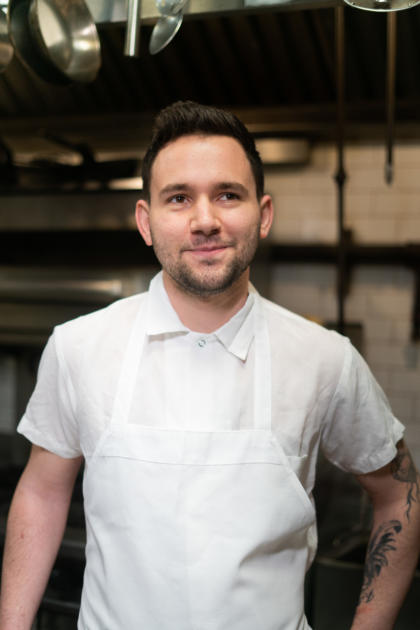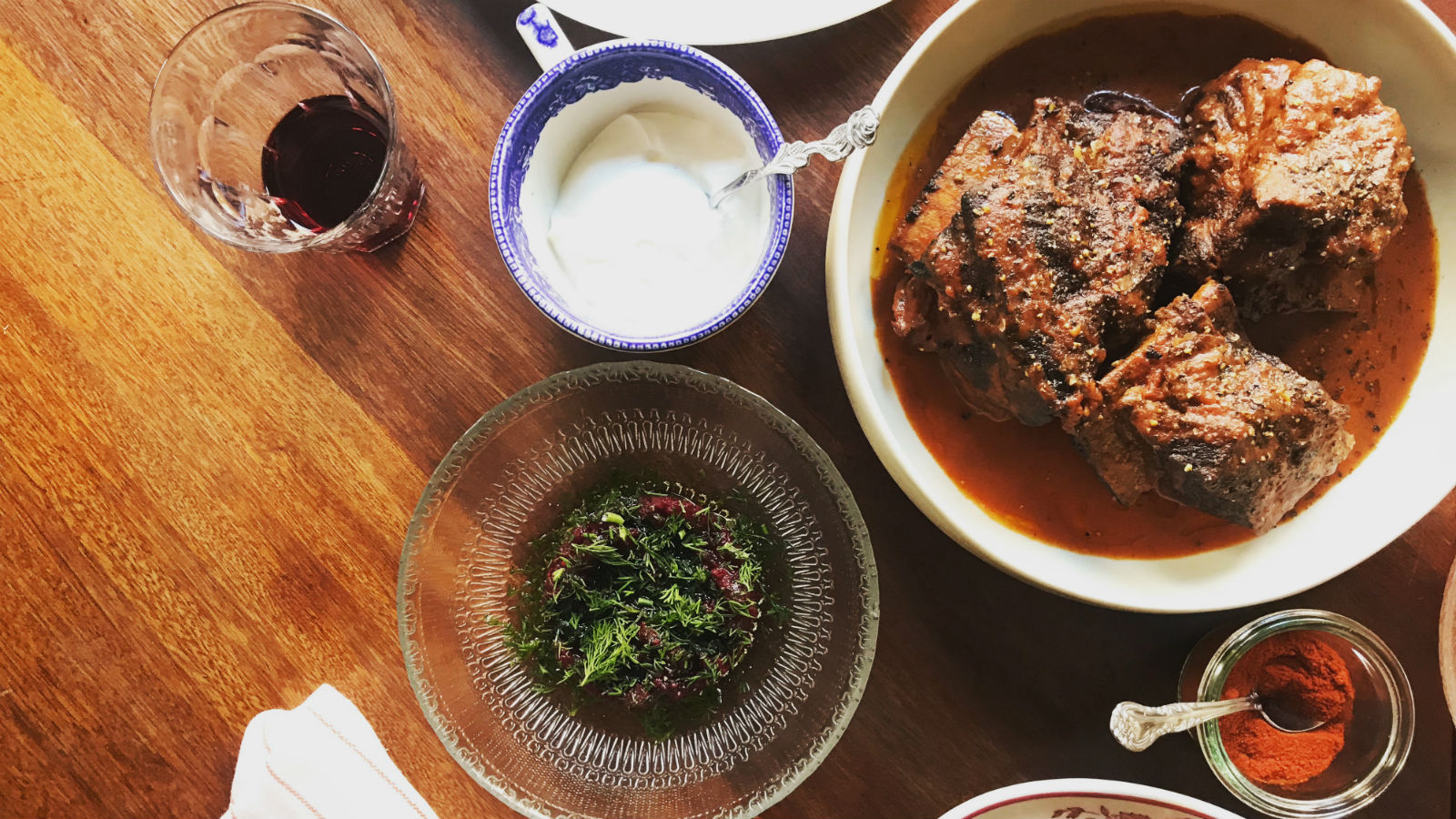Hungarian food, Jeremy Salamon explains, “is not an easy cuisine to preach” to American diners. The 25-year-old says this is, in part, because they haven’t tried it — yet.
They will soon get their chance, though, as Salamon has made it his mission to introduce people to the hearty goulash, rich chicken paprikash and thin, toppings-laden palacsinta (crepes) that his grandmother Agi cooked for him throughout his childhood in South Florida. At the time, these Hungarian dishes, as well as Eastern European Jewish staples such as chopped liver and brisket, seemed perfectly normal. “I never really thought about it,” he admits. Agi didn’t seek help in the kitchen or talk much about her past; Salamon only knew that she had narrowly escaped being sent to a concentration camp during World War II and eventually fled the country during the 1956 Hungarian revolution.
It wasn’t until he was a student at the Culinary Institute of America that Salamon thought to look into his family’s history, and recipes, more seriously. At a bookstore, he purchased the only Hungarian cookbook he could find: George Lang’s The Cuisine of Hungary. “It was the only copy,” he says with a laugh, and rather old-fashioned and encyclopedic. Nevertheless, he pored over the entire 500-page book in just a few months.
“I realized at the core [Hungarian food] is a really beautiful cuisine, influenced by all these other cultures,” from Turkish to Italian, Austrian, German and Ukrainian. Salamon was struck by the way the core dishes reflected a strong sense of community and family. “It’s very much about gathering. It’s comprised of soups, stews and braises — dishes that can be shared.”
The Nosher celebrates the traditions and recipes that have brought Jews together for centuries. Donate today to keep The Nosher's stories and recipes accessible to all.
Not that he could find many places to eat it. Options were scarce, even in New York’s famously diverse dining scene, where he was interning as part of his studies. He was disappointed to discover that the once-thriving Upper East Side Hungarian community, with its bakeries and eateries, had shrunk to just a handful of institutions.
Inspiration struck. “I wanted to take those pieces and put them back together to make more modern versions of Hungarian cuisine.”

While Salamon cooked at New York hotspots Locanda Verde, Buvette, and Prune, he continued toying with how to put Hungarian food back on the dining scene in “an approachable, accessible, chef-driven way.” After a trip to Hungary to visit family and conduct research — and raiding a reluctant Agi’s cabinet for her haphazard trove of recipes and Hungarian newspaper clippings — a series of pop-up dinners was born. At these dinners, Salamon put his own twist on traditional Hungarian and Hungarian-Jewish dishes, which drummed up such an interest that when he was promoted from line cook to head chef at The Eddy, a 40-seat restaurant in the East Village, in 2017, he totally revamped the seafood-focussed, New American menu.
Salamon began incorporating Hungarian and Eastern European ingredients into modern American dishes, such as pairing a house-made version of piros arany — a spicy, concentrated paprika and bell pepper paste — with Carolina shrimp, which “they would never put on seafood in Hungary.” He also reinvented traditional dishes, subbing the meat in stuffed cabbage with a filling of wild rice, pecans, onions, egg, bread crumbs, herbs and tangy yuzu, an Asian citrus. Agi’s palacsinta were stuffed with braised apple, smoked meringue, and topped with a thyme-rum butter, or served with warm chocolate cognac sauce and salted labneh — a far cry from the classic pairings of powdered sugar, apricot jam and ground walnuts. Salamon even took langos, a beloved, simple street food of fried dough, and added beef tartare and cured egg for a special pop-up event.

Salamon admits that educating diners who “couldn’t conceptualize what they were going to have” and pleasing New York’s Hungarian community “who came out of the woodwork,” eager to see his interpretation of the classics, was often a balancing act.
Though The Eddy shuttered in June 2019, Salamon remains proud of the kitchen he ran, and of giving Hungarian-Jewish food a platform. “It was needed, and it still is,” he says. Which is why highlighting Hungarian food “will always be a part of what I do next,” Salamon adds. “It’s something that hasn’t been tapped into, and deserves to be.”
From his new home in Los Angeles, Salamon is tapping away, researching and recipe-testing a cookbook based on Agi’s Hungarian-Jewish recipes titled “Agi: Preserving My Grandmother’s Hungary.” Amidst 100 recipes, Salamon seeks to trace Agi’s refugee journey from Budapest to Vienna, and finally the United States, weaving in Hungarian history. He’s also planning a new series of pop-up dinners on both coasts that he’s calling “Dinner at Agi’s.” His goal is to continue to educate and feed more people through both projects, and hopes that, sooner rather than later, he’ll have a more permanent restaurant “base camp.”
As for Agi, she’s now 94 and living in Florida. Salamon is proud to say that she has evolved from being somewhat puzzled by her grandson’s passionate interest in Hungarian food, and “has this newfound respect for what I’m doing.” Still, she “remains a bit of a mystery” — there’s more to her story, and perhaps more stashed-away recipes, that Salamon hopes to uncover for himself, and for diners both new and already smitten with Hungarian cuisine.
Make sure to check out Jeremy’s recipe for palascinta.



